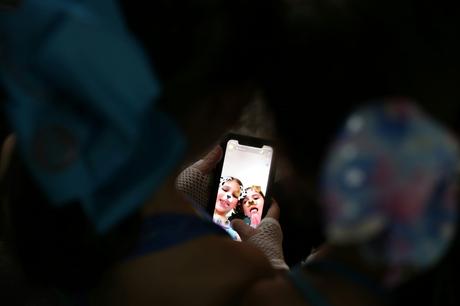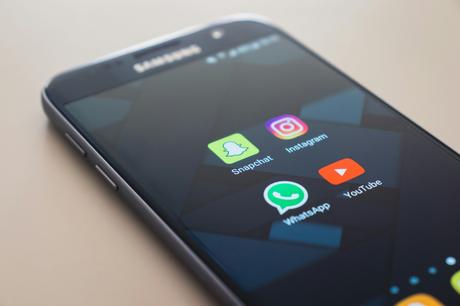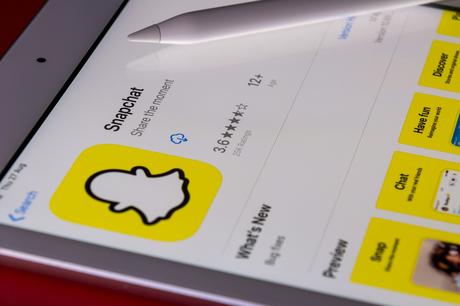In the fast-paced world of social media, where brevity reigns supreme and acronyms can pack a punch, it’s no surprise that platforms like Snapchat have cultivated their own unique lexicon. Among the myriad of abbreviations that flit across our screens, ASL stands out—not just for its simplicity, but for its rich tapestry of meaning. While many users may associate ASL with American Sign Language in one context or another, on Snapchat and similar platforms, it carries a different weight entirely.
But what exactly does ASL signify in this digital playground? Is it merely a casual inquiry into age, sex, and location—or does it encapsulate something deeper about our online identities? As we delve into the nuances of this popular acronym, we’ll unravel how such shorthand shapes conversations among friends and acquaintances alike. Join us as we explore the significance of ASL on Snapchat and uncover what these three letters reveal about modern communication.
What is ASL? Definition and Context
American Sign Language (ASL) is a fully developed visual language that has its own unique grammar and syntax, distinct from both English and spoken languages. Rooted in the Deaf community’s rich history, ASL emerged in the early 19th century as a means of communication among individuals who were deaf or hard of hearing. It utilizes hand signs, facial expressions, and body movements to convey ideas—a contrast to the auditory nature of spoken languages. This depth in expression not only facilitates conversation but also fosters a strong sense of identity within the Deaf community.
In the context of digital communication, especially on platforms like Snapchat where brevity reigns supreme, ASL often stands for age, sex, location. However, recognizing ASL’s significance extends beyond just an acronym; it invites us to appreciate the nuances involved in how communities adapt their language using modern technology. Engaging with ASL enriches our understanding of diverse communication methods and highlights how linguistics evolve alongside social changes—demonstrating that even on fast-paced apps like Snapchat, there lies an intricate web of cultural significance worth exploring.

The Importance of ASL on Snapchat
Understanding ASL—Age, Sex, Location—on Snapchat transcends mere curiosity; it cultivates a richer communication landscape. In an era dominated by transient digital interactions, knowing someone’s ASL can enhance the connection by adding layers of context beyond just emojis and filters. This simple acronym fosters a sense of authenticity in an otherwise curated online persona, allowing users to break down barriers and engage more meaningfully with friends or potential new acquaintances.
Additionally, sharing one’s ASL reflects a growing trend toward transparency in social media culture. It encourages users to make choices about their interactions based on mutual interests or compatibility, transforming casual chats into deeper conversations. This shift is particularly valuable in a platform where users often grapple with the tension between privacy and openness. By inviting others into their world through basic personal information like age or location, Snapchatters create opportunities for authentic engagements that might blossom into friendships or collaborations that extend off-screen.
How ASL is Used in Conversations
American Sign Language (ASL) plays a vital role in daily conversations within the Deaf and hard-of-hearing communities, allowing for nuanced expression beyond mere words. Each sign is not just a static gesture; it’s infused with emotion, context, and cultural meaning that can convey complex ideas through facial expressions and body language. For example, while fingerspelling words might share one facet of communication, the use of signs like “thank you” or “sorry” can be enriched by subtleties in movement, elevating an interaction from mundane to meaningful.
Moreover, ASL fosters inclusivity and connection. In a world where digital communication often falls short of conveying true sentiment—think emojis versus real-life reactions—ASL transcends barriers by inviting people into a vibrant visual language that encompasses storytelling and personal experience. When people learn ASL or incorporate gestures into their larger communications repertoire on platforms like Snapchat, they enhance their ability to connect not only with Deaf individuals but also cultivate empathy among diverse audiences. This richness opens doors for conversation that radiate understanding and respect across different communities.

Common Misinterpretations of ASL
One common misinterpretation of ASL in digital communication is equating it solely with American Sign Language, overlooking its diverse meanings across different contexts. Social media users often encounter ASL as an abbreviation for age, sex, location, a playful yet effective way to engage in casual conversation. However, this can lead to confusion when individuals stumble upon discussions about Deaf culture or sign language and assume they are still in the realm of social abbreviations. Understanding this duality emphasizes the importance of context; what may seem like a simple chat request could also open doors to deeper conversations surrounding accessibility and inclusivity.
Additionally, there’s often a misconception that learning ASL is too challenging or time-consuming for those outside the Deaf community. This assumption forgets that many resources are accessible online, making it easier than ever to begin learning the basics of sign language. By normalizing conversations around ASL—whether on Snapchat or in everyday interactions—we can bridge gaps between hearing and Deaf cultures. Engaging with both interpretations allows us not only to enrich our social media experiences but also fosters genuine connections that celebrate diversity and understanding in communication.
Alternatives to ASL on Snapchat
In the dynamic ecosystem of social media, Snapchat stands out not only for its ephemeral content but also for its unique lexicon. Embracing the language of Snapchat means more than just decoding acronyms; it invites users to immerse themselves in a vibrant culture that celebrates creativity and authenticity. ASL, often used to signify age, sex, location, encapsulates this spirit—a playful yet straightforward way to connect with others amidst the constant flow of images and stories.
As users engage with these shorthand expressions, they tap into a larger conversation that transcends age and geographic boundaries. It fosters an environment where communication evolves rapidly, reflecting trends and societal shifts in real-time. Understanding this new form of dialog allows individuals not just to participate but also to build bridges across diverse communities—turning a simple platform into a rich tapestry of human interaction. By embracing the language of Snapchat, we open ourselves up to deeper connections and a shared understanding among generations navigating digital spaces together.

Conclusion: Embracing the Language of Snapchat
Embracing the language of Snapchat goes beyond mere acronyms; it’s an invitation to participate in a vibrant, evolving digital dialect that reflects our collective experiences and emotions. ASL, frequently used to signify “as hell,” captures not just intensity but also individuality in each Snap shared. This playful vernacular creates a unique bond among users, fostering authenticity and relatability in ways traditional communication cannot achieve.
Moreover, understanding these nuances encourages deeper connections within the Snapchat community. When users embrace this informal lexicon, they not only enhance their interactions but also contribute to a shift towards more genuine expressions of self—removing barriers that often accompany conventional forms of dialog. As we navigate this dynamic landscape, let’s celebrate the creativity and spontaneity inherent in these linguistic trends as they evolve; after all, every Snap tells a story waiting to be shared—and understood—through its uniquely crafted language.

